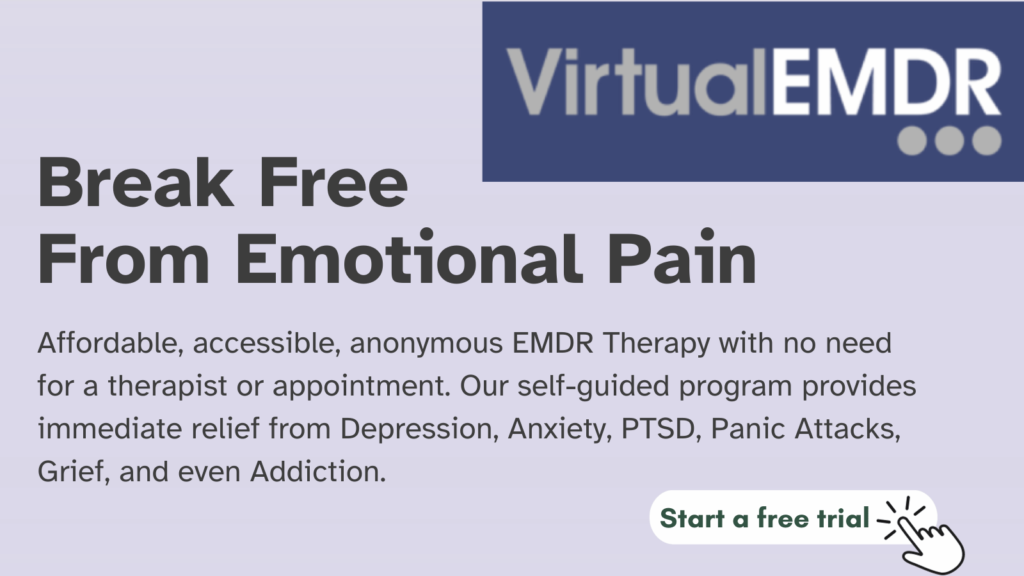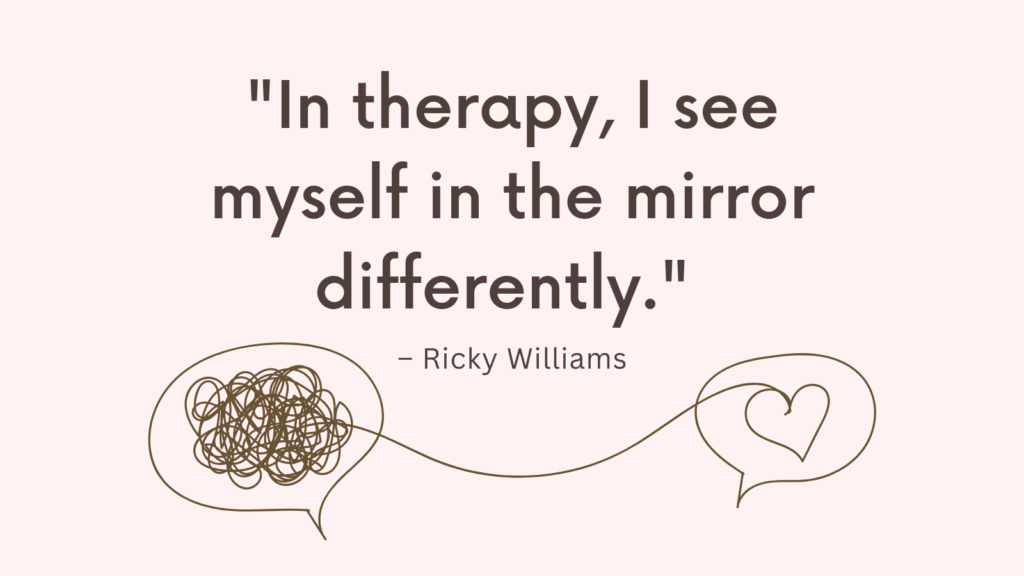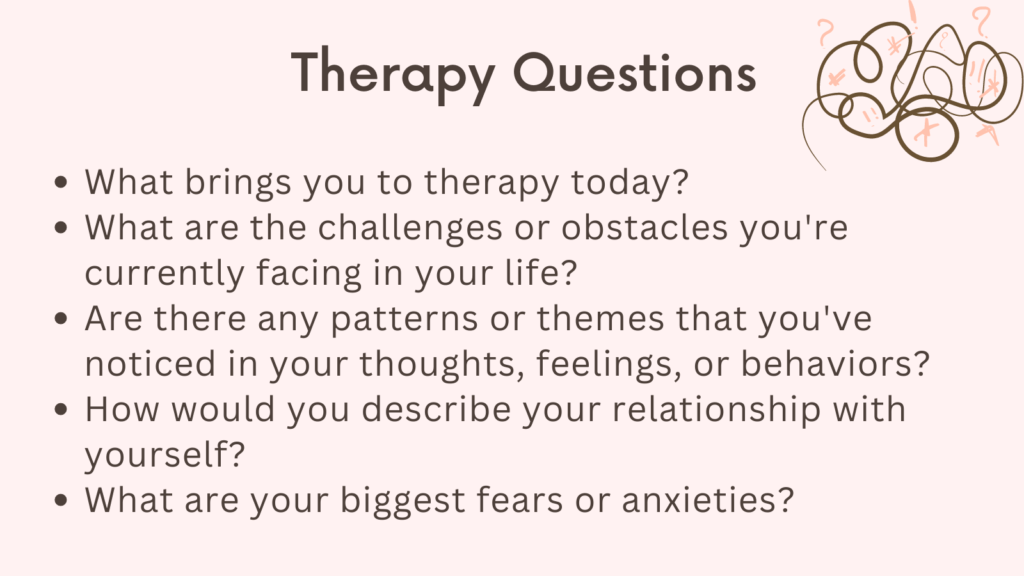Can you do EMDR on yourself? Read on to find out.
What Is EMDR, Really?
EMDR is an 8-phase therapy model that uses bilateral stimulation (like eye movements or tapping) to help the brain reprocess stuck or traumatic memories. It’s often used for:
- PTSD
- Anxiety
- Phobias
- Childhood trauma
- Grief
- Disturbing experiences that still feel “raw” years later
The goal is not to erase the memory, but to reduce the emotional intensity and rewire the brain’s response.
Can You Do EMDR on Yourself?
While it is possible to learn and practice some aspects of EMDR (Eye Movement Desensitization and Reprocessing) techniques on your own, it is important to note that the full therapeutic process of EMDR is best conducted with the guidance of a trained and licensed therapist.
EMDR involves complex psychological processes and requires specific skills, expertise, and knowledge for its effective implementation.
Nevertheless, learning about EMDR techniques can be beneficial for self-care and personal growth. Here are some considerations if you are interested in exploring EMDR on your own:
1. Understanding EMDR
EMDR is a specialized therapeutic approach that involves a comprehensive eight-phase protocol.
These phases address client history, treatment planning, resource development, desensitization, installation, body scan, closure, and reevaluation.
It is essential to have a solid understanding of these phases, their purpose, and the general principles underlying EMDR before attempting to practice it independently.
2. Self-Assessment
Before engaging in any potentially distressing or traumatic memory work, it is crucial to assess your emotional stability and readiness.
While EMDR is designed to help individuals process and heal from traumatic experiences, it can also bring forth intense emotions and reactions.
Evaluate whether you feel mentally and emotionally prepared to engage in this type of work.
If you have a history of severe trauma or if you experience significant emotional distress, it is strongly advised to seek professional support from an EMDR therapist.
Related: Brainspotting Vs EMDR (Which One Is More Effective?)
3. Developing Self-Regulation Skills
EMDR requires individuals to have a solid foundation of emotional regulation skills.
This involves the ability to manage distressing emotions and sensations effectively without becoming overwhelmed.
If you need to enhance your self-regulation skills, consider engaging in activities such as mindfulness, deep breathing exercises, progressive muscle relaxation, or other techniques recommended by mental health professionals.
4. Identifying Target Memories
EMDR involves targeting specific distressing memories to process them effectively.
Identify the specific event or experience that you wish to work on, ensuring that it is not too overwhelming or triggering.
Start with a memory that you feel ready to process and that you believe will have a positive impact on your well-being.
5. Creating a Safe Environment
Ensure that you have a safe and comfortable environment where you can engage in EMDR.
Choose a quiet space free from distractions, where you can focus on the work without interruptions.
You may want to create a calming atmosphere by adjusting lighting, using relaxation music, or incorporating soothing scents.
Related: Best 10 EMDR Books
6. Bilateral Stimulation Techniques
Bilateral stimulation is a key aspect of EMDR, involving rhythmic, left-right sensory stimulation to facilitate the processing of distressing memories.
There are various ways to incorporate bilateral stimulation on your own, such as eye movements, tactile stimulation (e.g., tapping each hand alternately), auditory stimulation (e.g., using headphones with alternating sounds), or visual stimulation (e.g., using a light bar).
Experiment with these techniques and choose the one that feels most comfortable and effective for you.
7. Self-Reflection and Emotional Processing
Engage in structured self-reflection to explore the target memory systematically. Initially, focus on being present with the memory, acknowledging any emotions, sensations, or thoughts that arise.
Observe without judgment, allowing yourself to fully experience the memory while staying mindful of your emotional safety.
Notice any shifts or changes in your thoughts or feelings as you engage in the self-reflection process.
8. Positive Associations and Anchoring
To promote resilience and positive growth during EMDR, you can incorporate the concept of positive associations.
Identify positive resources, such as supportive individuals, happy memories, or affirmations, and connect them with the target memory.
This technique aims to create a more balanced perspective, allowing positive emotions or beliefs to anchor while processing the distressing memory.
9. Self-Care and Integration
Once you have completed a session focused on a target memory, it is crucial to prioritize self-care.
Engage in activities that promote relaxation, self-compassion, and self-nurturing.
Allow yourself time to integrate the processing work, being patient and gentle with yourself as you notice any shifts or changes in your emotional well-being.
Related: Brainspotting Risks and Side Effects

Conclusion
While it may be possible to utilize certain EMDR techniques on your own, it is important to recognize the limitations of self-practice.
EMDR therapists undergo extensive training, supervision, and clinical experience to ensure the ethical and effective use of EMDR. They can provide a safe and supportive environment, offer guidance tailored to your unique needs, and address any potential challenges or complications that may arise during the therapeutic process.




